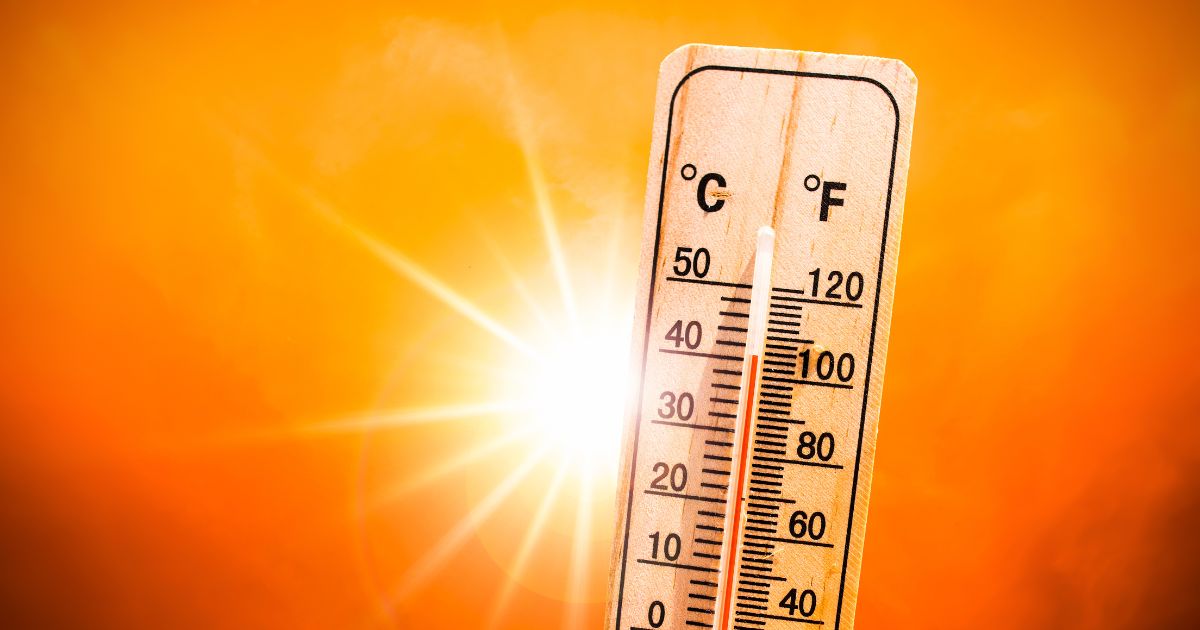Thanks to a heat dome, people across the American Midwest and Northeast, plus parts of Canada, are currently experiencing record-breaking heat before summer has officially begun. An estimated 150 million people are expected to experience temperatures in the 90s this week!1 There will likely be more where that came from – last summer, the heat dome parked itself over Texas and the Southern US for most of the summer.
Weather hot enough to lead to heat advisories is often accompanied by air quality issues. Understanding the link between these two events is essential, as it highlights the importance of taking preventive measures to protect our health during the hottest times of the year.
The Science Behind Air Quality and Heat
To grasp why air quality alerts frequently accompany heat advisories, it’s necessary to explore the relationship between temperature, pollutants, and atmospheric conditions.
Increased Ozone Levels
One of the primary pollutants responsible for poor air quality during hot days is ground-level ozone. Unlike the protective ozone layer high in the atmosphere, ground-level ozone is a harmful pollutant formed when nitrogen oxides (NOx) and volatile organic compounds (VOCs) react in the presence of sunlight.
Nitrogen Oxides (NOx) are emitted from vehicle exhaust, industrial facilities, and power plants. Volatile Organic Compounds (VOCs) are released from products like paints, solvents, gasoline, and certain industrial processes plus building materials like carpeting.
The chemical reaction causing ground-level ozone is accelerated by higher temperatures, leading to elevated ozone levels during heatwaves.
Stagnant Air and Pollution Accumulation
Hot weather often brings stagnant air conditions, where there is little to no wind. In addition to making the heat feel hotter, the lack of breeze prevents pollutants from dispersing. This leads pollutants to accumulate near the ground, resulting in higher concentrations of harmful substances like ozone and particulate matter.
These conditions are particularly prevalent in urban areas, where the heat island effect exacerbates temperature rises and pollution levels.
Health Impacts of Poor Air Quality and Heat
The combination of high temperatures and poor air quality can have severe consequences for human health, particularly for vulnerable populations such as children, the elderly, and individuals with pre-existing respiratory or cardiovascular conditions like asthma or chronic obstructive pulmonary disease (COPD).
Respiratory Issues
Elevated levels of ground-level ozone and particulate matter can irritate the respiratory system, leading to symptoms such as coughing, throat irritation, shortness of breath, and aggravated asthma – sometimes causing asthma attacks. Long-term exposure to these pollutants can result in chronic respiratory diseases, reduced lung function, and increased susceptibility to respiratory infections.
Cardiovascular Problems
Heat stress, coupled with exposure to air pollutants, can strain the cardiovascular system. High temperatures cause the body to work harder to maintain a normal temperature, increasing heart rate and blood pressure. Pollutants like ozone and particulate matter can further exacerbate these effects, leading to an increased risk of heart attacks, strokes, and other cardiovascular events.
Preventive Measures and Mitigation Strategies
Understanding the link between heat advisories and air quality alerts underscores the importance of taking proactive steps to protect our health and mitigate the impacts of these events.
- Stay Informed: Monitor local air quality and weather forecasts. Websites and apps such as the EPA’s AirNow provide real-time air quality index (AQI) updates and heat advisories.
- Limit Outdoor Activities: Reduce strenuous outdoor activities during peak heat and pollution hours, typically in the afternoon and early evening.
- Stay Indoors: Spend time in air-conditioned buildings during heatwaves and poor air quality days. Use air purifiers to reduce indoor pollutant levels.
- Hydrate and Cool Down: Drink plenty of water, wear lightweight clothing, and use fans or cool showers to lower body temperature if air conditioning isn’t an option.
- Use an Austin Air Cleaner: Outdoor air can seep inside from windows and doors, using an air cleaner – like the Austin Air HealthMate with HEPA and activated carbon – can keep you safe.
The consistent overlap between air quality alerts and heat advisories is a stark reminder of the complex interplay between weather patterns, pollution, and public health. As extreme weather events become more prevalent, understanding and addressing these connections becomes increasingly critical. By staying informed and taking preventive measures, we can protect our health. This summer, let’s not only enjoy the warmth but also take steps to breathe cleaner, healthier air. Adding an Austin Air purifier to your home can make a big difference – whether it’s high heat or wildfires, we’ve got you covered this summer.
REFERENCE
1 Tens of millions face dangerously high temperatures. (2024 June 18). [Video]. NBC News. https://www.nbcnews.com/news/weather/live-blog/heat-wave-live-updates-rcna157615.
